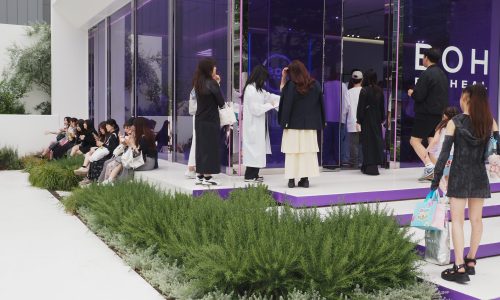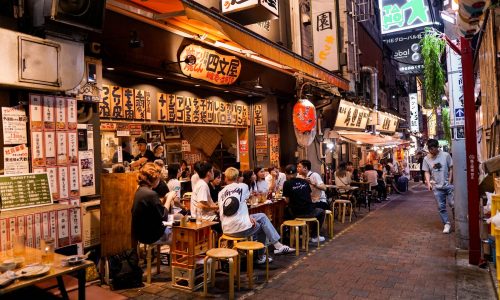
Japan Office Setup, Virtual Presence, and Local Representation: What’s Best for You? Japan rewards precision and patience. If you’re entering...

Japan rewards precision and patience. If you’re entering the Japanese market, your first structural decision; how you show up physically (or virtually), sets the tempo for everything that follows: bank accounts, visas, credibility with customers, and your timeline to revenue. This guide gives you the clear-eyed, nuts-and-bolts view of Japan office setup options, their trade-offs, and how to choose the best path for your stage.
Table of Contents
What it is: A professional registered address and mail handling, sometimes call answering and meeting room access—without leasing physical space full-time.
Who chooses this: Companies validating demand, building pipelines, and preparing for Japan company registration with virtual address as a stopgap.
What it is: A non-revenue presence for market research, liaison, and sourcing. Not a legal entity that conducts business.
Important nuance: The difference between representative office and subsidiary in Japan is night and day: a rep office is a listening post; a subsidiary is a selling body.
What it is: Japan location of your foreign company. You transact in Japan, but legally it’s still the foreign entity.
Choose this if: You want to sell now, maintain centralized governance, and accept that some large clients or sectors may still insist on a local company.
What it is: A Japanese legal entity you own—either GK (合同会社) similar to an LLC, or KK (株式会社) akin to a joint-stock corporation.
GK vs KK in one breath: GK = faster, simpler, cost-efficient; great for SMEs and startups. KK = traditional, highly credible, better for fundraising or signaling scale.
Aspect | Virtual Office Services | Representative Office | Branch Office | Subsidiary (GK / KK) |
Address/Presence | ✔ Address; meeting rooms ad-hoc | ✔ Office allowed | ✔ Full presence | ✔ Full presence |
Can Sell/Invoice | ✖ | ✖ | ✔ | ✔ |
Bank Account | Sometimes difficult with virtual-only | Possible hurdles | ✔ More feasible | ✔ Standard |
Hiring Staff | ✖ (without entity) | Limited/indirect | ✔ (via branch) | ✔ |
Regardless of the structure, local representation in Japan changes outcomes. Introductions beat cold outreach, bilingual precision matters, and on-the-ground admin accelerates everything. Even with a virtual presence, appoint a local representative who can host meetings, handle documents, and keep the process moving.
Sometimes—especially for a GK. However, banks and certain permits often expect a real office lease. A practical approach is to incorporate with virtual office services, then add a modest physical office to smooth banking and hiring when you’re ready.
Representative Office: research/liaison, no revenue, lightweight compliance—good for 6–18 months of groundwork.
Subsidiary (GK/KK): full operations—contract, invoice, hire, and scale. Stronger credibility with partners, banks, and regulators.
– Bank accounts: expect interviews and documentation; Japanese address and local presence help.
– Seals (inkan/hanko) & e-seals: still relevant; increasingly digital, but don’t assume.
– Bilingual documentation: keep JP/EN versions of bylaws, contracts, policies. Precision = respect.
If leadership will manage in Japan, explore appropriate visas and office requirements. If hiring locally, prepare for social insurance, labor rules, and payroll compliance.
Virtual office: fastest setup; lowest cost. Representative Office: low cost, quick. Branch: moderate setup; faster to transact than a subsidiary. Subsidiary (GK/KK): weeks, not days—but most future-proof.
– Data & security: align with Japanese privacy and sector standards.
– Sector licensing: food, med-tech, fintech, construction, import/export—plan early.
– Contracts: bilingual templates governed by Japanese law where appropriate.
– Tax posture: branch vs subsidiary has different implications; align cross-border tax advisors.
– English-only materials → Localize the deck, case studies, and one-pager (JP/EN).
– No local presence for meetings → Pair virtual office with trusted local representation.
– Pushing contracts before trust → Offer a pilot with tight scope and metrics.
– Ambiguous ownership of tasks → Send minutes within 24–48h with owners and due dates.
Early exploration (< 6 months): Virtual office + local rep; keep costs lean.
Active pilots & quotes: Branch Office or small GK.
Enterprise sales, hiring, long-term plan: KK (or GK first for speed).
Highly regulated sectors: Subsidiary + specialized licenses; don’t skip compliance choreography.
Your Japan office setup is the first message you send to the market. A virtual office says “we’re exploring.” A Representative Office says “we’re committed to learning.” A Branch says “we’re selling.” And a Subsidiary says “we’re here to stay.” Choose the door that suits your stage—and let it slide open.
In some cases—especially for a GK—yes. But banks, permits, and hiring often require a physical office. Many firms start virtual, then add a serviced office for banking and HR.
A Representative Office can research and coordinate but cannot sell or invoice. A Subsidiary (GK/KK) is a full commercial entity that can contract, invoice, hire, and scale.
Sometimes. But many procurement teams prefer a Japanese-incorporated entity (especially KK) for governance and risk policy reasons. Check vendor policies early.
Virtual office services can be set up quickly. Representative Offices are also relatively fast. Branches and subsidiaries take longer—think weeks, not days, if paperwork is clean.
If you want results, yes. A local representative handles meetings, documents, and cultural nuance. It’s the single biggest accelerator for early credibility.
A Subsidiary (GK/KK) offers the cleanest path for employment, payroll, and social insurance. A Branch can also hire, but a subsidiary is typically preferred for optics and governance.
Plan for licenses and sector-specific compliance. These are easier with a subsidiary. Engage bilingual legal/accounting support early.
Virtual office + local representation in Japan, and run pilots under HQ contracts where permissible. When a customer asks for a local entity, transition to GK (and later KK if needed).
For large, traditional enterprises—often yes. For startups/SMEs—GK is perfectly fine and faster. You can upgrade optics later as your pipeline matures.
Virtual → GK (first customers) → KK (enterprise readiness) with a small serviced office and a trusted local representative.

Japan Office Setup, Virtual Presence, and Local Representation: What’s Best for You? Japan rewards precision and patience. If you’re entering...

Starting a Business in Japan: Your Definitive Guide If you’re considering starting a business in Japan, you’re making a wise...

From Pop-Up to Permanent: How Foreign Brands Use Temporary Retail to Test Japan’s Market Pop-up retail has become a strategic...

Japan’s Regulatory Landscape for Foreign SMEs: A Step-by-Step Compliance Guide Entering the Japanese market requires navigating a complex regulatory environment....

Understanding Japan’s Consumer Psychology: Why Minimalism, Quality, and Seasonal Relevance Matter Introduction Japanese consumer behavior is shaped by cultural values...

How to Navigate Japan’s E-Commerce Landscape as a Foreign Brand Introduction Japan’s e-commerce market is one of the most advanced...

The Role of Trust in Japanese B2B Relationships: What Foreign Companies Must Understand Japan’s business culture is built on trust,...

Winning Japanese Consumers: What Global Brands Get Right (and Wrong) Introduction Japan is one of the most sophisticated consumer markets...

Why Most SMEs Fail in Japan and How to Succeed with the Right Strategy Introduction: The Allure of Japan Japan...